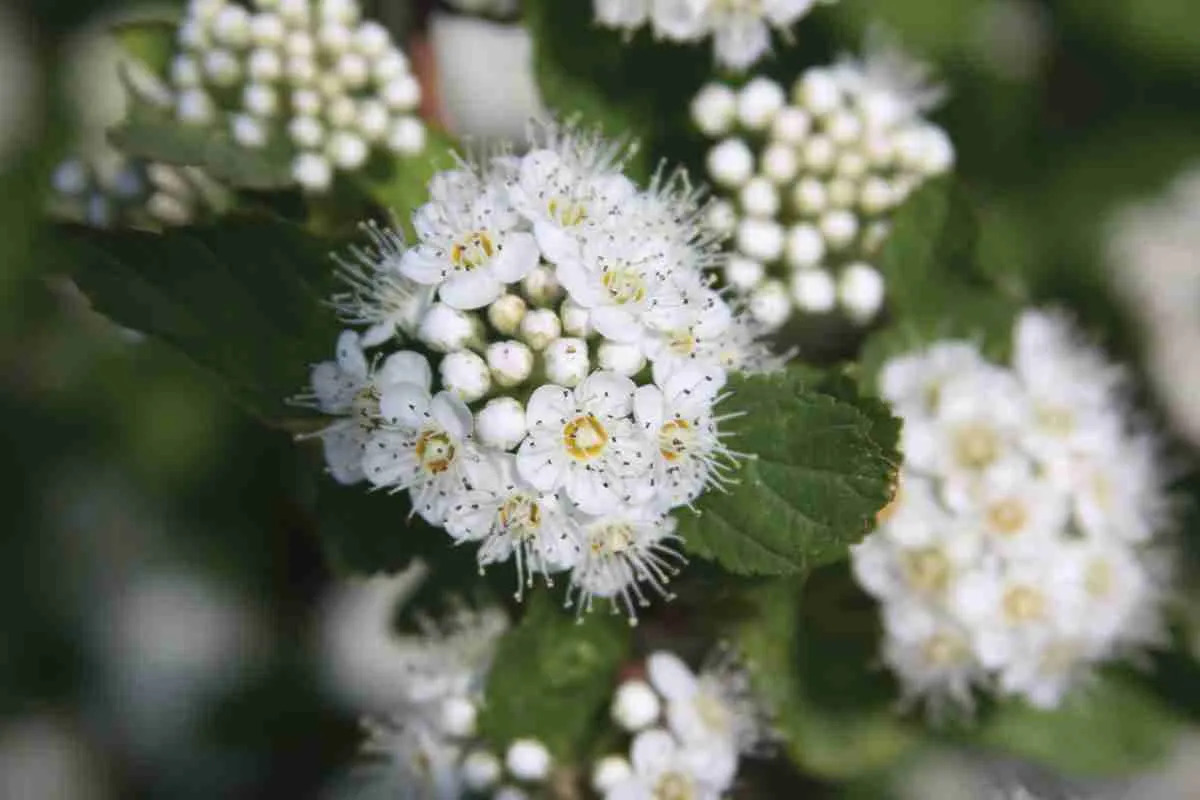
Ninebark, scientifically known as Physocarpus, is a fascinating and versatile plant that has captured the attention of plant enthusiasts and horticulturists alike. With its striking foliage, beautiful flowers, and unique bark characteristics, ninebark adds an element of intrigue and beauty to any garden or landscape.
In this article, we will explore 18 astonishing facts about ninebark that will leave you amazed and inspired. From its rich history to its various species and cultivars, we will delve into the diverse aspects of this remarkable plant. Whether you are a gardening enthusiast looking to add color and texture to your outdoor space or simply curious about the wonders of the natural world, this article will provide you with a comprehensive understanding of ninebark.
Key Takeaways:
- Ninebark, a versatile plant with peeling bark, attracts beneficial insects and is low-maintenance, making it a great choice for busy gardeners and pollinator gardens.
- Native to North America, Ninebark offers year-round interest, erosion control, and medicinal history, making it a remarkable and long-lived addition to any landscape.
Ninebark gets its name from its peeling bark.
The distinctive characteristic of Ninebark is its peeling bark, which often reveals multiple layers of reddish-brown, copper, or tan-colored bark beneath. This peeling habit gives the plant its name, as it appears to have nine layers of bark when stripped.
Ninebark is native to North America.
Native to both the eastern and western regions of North America, Ninebark can be found growing in a wide range of habitats, including woodlands, river banks, and mountain slopes.
It belongs to the rose family (Rosaceae).
Ninebark is a member of the Rosaceae family, which includes other popular plants such as roses, apples, and strawberries. This family is known for its ornamental and edible plants.
The flowers of Ninebark are small, but attractive.
Ninebark produces clusters of small, five-petaled flowers that can range in color from white and cream to shades of pink. These delicate blossoms add charm and beauty to any garden.
It is highly adaptable to different soil conditions.
Ninebark is known for its ability to thrive in various soil types, including clay, loam, and sandy soils. It is also tolerant of both acidic and alkaline pH levels, making it suitable for a wide range of landscapes.
Ninebark is a low-maintenance plant.
One of the greatest advantages of Ninebark is its low-maintenance nature. Once established, it requires minimal watering and fertilizing, making it an ideal choice for busy gardeners and landscapes with limited resources.
There are several cultivars of Ninebark available.
Ninebark cultivars come in a variety of sizes, shapes, and colors. Some popular cultivars include ‘Diabolo’ with its dark purple foliage, ‘Summer Wine’ with its burgundy leaves, and ‘Coppertina’ with its coppery-red foliage.
Ninebark provides year-round interest.
With its colorful bark, attractive flowers, and stunning foliage, Ninebark offers visual interest throughout the year. In the fall, the leaves often turn shades of yellow, orange, and red, adding a burst of color to the autumn landscape.
It is a magnet for beneficial insects and pollinators.
The nectar-rich flowers of Ninebark attract a wide range of beneficial insects, including butterflies and bees, making it a valuable addition to any pollinator garden.
Ninebark can be used for erosion control.
Due to its tolerance for poor soils and its root system, Ninebark is often used for erosion control on slopes and hillsides. Its dense foliage helps stabilize the soil and prevent erosion.
Native American tribes used Ninebark for medicinal purposes.
Various Native American tribes utilized different parts of the Ninebark plant for its medicinal properties. It was used to treat ailments such as fevers, coughs, and colds.
It is deer-resistant.
Deer tend to avoid grazing on Ninebark due to its bitter taste and tough leaves. This makes it an excellent choice for gardens in areas with high deer populations.
Ninebark can be pruned to maintain its shape.
If desired, Ninebark can be easily pruned to maintain a more compact shape or to encourage bushier growth. Pruning is typically done in late winter or early spring before new growth begins.
It can be grown both as a shrub and a small tree.
Depending on the variety and pruning techniques, Ninebark can be grown as a multi-stemmed shrub or trained into a small, ornamental tree form.
The fruits of Ninebark are small capsules.
After flowering, Ninebark produces small, urn-shaped capsules that contain numerous tiny seeds. These capsules add further visual interest to the plant.
It can tolerate some shade.
While Ninebark thrives in full sun, it can also tolerate partial shade, making it a versatile option for different areas of the garden.
Ninebark is a popular choice for landscaping and hedges.
Due to its attractive foliage, versatility, and low maintenance needs, Ninebark is often used in landscaping as a specimen plant, in mixed borders, or as a hedge.
It is a long-lived plant.
With proper care, Ninebark can live for many years, bringing beauty and enjoyment to your garden for a long time.
In conclusion, Ninebark is an astonishing plant with numerous unique characteristics and benefits. Whether you are looking for a low-maintenance ornamental, a pollinator-friendly addition to your garden, or an erosion control solution, Ninebark has got you covered. Its adaptability, attractive foliage, and year-round interest make it a remarkable choice for any landscape.
Conclusion
In conclusion, ninebark is truly a remarkable plant that offers a wide range of benefits and features. From its stunning foliage to its ability to withstand various weather conditions, ninebark is a versatile and resilient addition to any garden or landscape.By learning about these 18 astonishing facts about ninebark, you can appreciate the unique characteristics and advantages of this plant. Whether you’re looking for a vibrant and attractive shrub or a natural and effective erosion control solution, ninebark has got you covered.So, don’t hesitate to explore the wonderful world of ninebark and discover the countless possibilities it brings. With its beauty, hardiness, and ecological benefits, ninebark is sure to impress both novice and experienced gardeners alike. Add this extraordinary plant to your outdoor space and enjoy its abundant rewards for years to come.
FAQs
1. What is the ideal growing condition for ninebark?
Ninebark thrives in full sun to partial shade and prefers well-drained soil. It can tolerate a wide range of soil types, including clay, loam, and sandy soils.
2. How tall does ninebark typically grow?
Depending on the variety, ninebark can reach a height of 6 to 10 feet. However, there are also dwarf cultivars available that stay more compact, around 3 to 4 feet tall.
3. When is the best time to prune ninebark?
Pruning ninebark is best done in late winter or early spring before new growth appears. This allows for the removal of any dead or damaged branches and encourages healthy and vigorous growth.
4. Is ninebark susceptible to any pests or diseases?
Ninebark is generally resistant to most pests and diseases. However, it may occasionally encounter issues such as powdery mildew or aphids. Regular inspection and proper care can help prevent and address such problems.
5. Can ninebark be grown in containers?
Yes, ninebark can be grown in containers. It is important to choose a proper-sized container with good drainage. Regular watering and proper fertilization are crucial for container-grown ninebark.
6. Can ninebark be used for landscaping purposes?
Absolutely! Ninebark is a popular choice for landscaping due to its attractive foliage and versatility. It can be used as a hedge, specimen plant, or even in mixed borders to add a splash of color and texture.
Ninebark's captivating qualities make it a standout in any garden. If you're curious about other fascinating plants, consider exploring the unique characteristics of the compass plant, a native plant that's sure to pique your interest. For those seeking ornamental plants with a touch of elegance, the intriguing facts about Fatsia Japonica will not disappoint. And if you're looking to expand your knowledge of shrubs, our comprehensive article on the topic is a must-read.
Was this page helpful?
Our commitment to delivering trustworthy and engaging content is at the heart of what we do. Each fact on our site is contributed by real users like you, bringing a wealth of diverse insights and information. To ensure the highest standards of accuracy and reliability, our dedicated editors meticulously review each submission. This process guarantees that the facts we share are not only fascinating but also credible. Trust in our commitment to quality and authenticity as you explore and learn with us.


